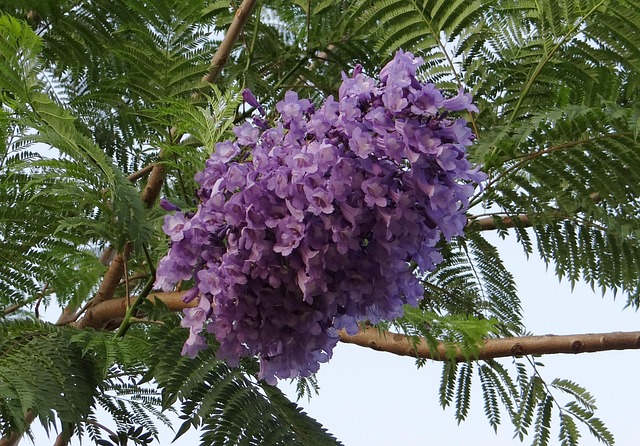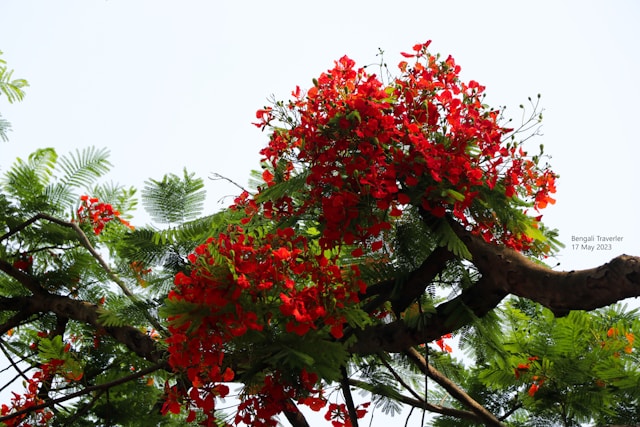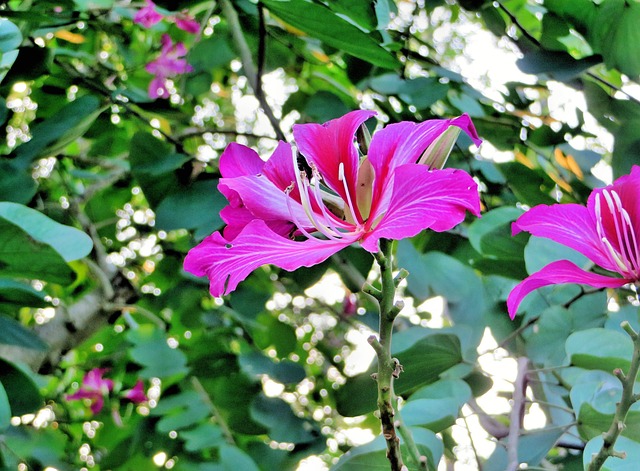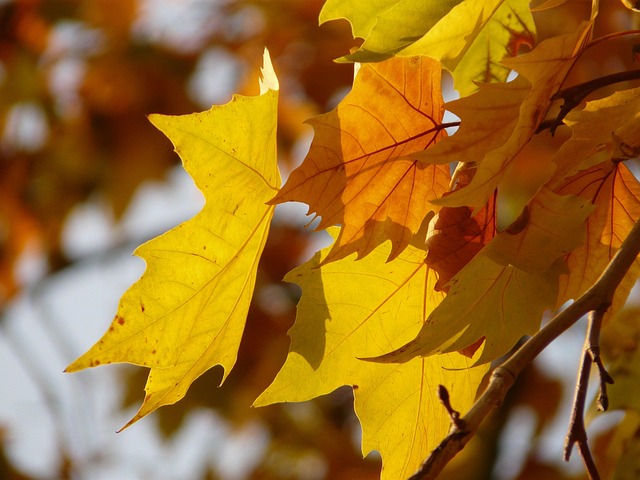
Pakistan, a country blessed with diverse climates and topographies, is home to a spectacular variety of trees that beautify the landscape from the snowy north to the sun-drenched south. These trees not only add charm to cities, gardens, and countrysides but also play crucial roles in providing shade, purifying the air, and supporting biodiversity. Whether they bloom in vibrant colors or stand tall with majestic canopies, some trees are simply unforgettable in their elegance.
In this blog, we’ll take a closer look at the most beautiful trees in Pakistan, exploring what makes each of them unique, where you can spot them, and why they deserve appreciation.

Known for: Stunning purple-blue flowers
Best time to see: Late Spring to Early Summers
Common in: Islamabad, Lahore, and Peshawar
The Jacaranda tree is one of the most visually striking trees in Pakistan. During spring, its bell-shaped lavender-blue flowers transform avenues and gardens into dreamlike landscapes. Islamabad, in particular, is famous for its roads lined with blooming Jacarandas.
Besides its ornamental beauty, the Jacaranda is a fast-growing tree that thrives in warm climates and offers excellent shade. Its soft, fern-like foliage adds to its delicate appearance even when it’s not in bloom.
Gul Mohar (Delonix regia) – Flame Tree

Known for: Fiery red-orange blossoms
Best time to see: Late spring to early summer (May–June)
Common in: Karachi, Lahore, Multan
Also called the Flame Tree or Royal Poinciana, the Gul Mohar lives up to its name with a crown of vivid red-orange flowers that appear even before the leaves fully develop. It’s a tropical beauty that stands out in urban settings and is often planted along streets and in parks.
Its wide, umbrella-shaped canopy also makes it an ideal tree for shade in hot cities like Karachi.
Kachnar (Bauhinia variegata) – Orchid Tree

Known for: Orchid-like white, pink, or purple flowers
Best time to see: Spring
Common in: Punjab region
The Kachnar tree is a small to medium-sized tree that brings elegance and fragrance to the landscape. Its blossoms, resembling orchids, come in various shades and often appear in clusters, attracting bees and butterflies.
Kachnar is not just admired for its beauty; its flowers and buds are also used in traditional cooking in parts of Pakistan, particularly in rural Punjab.
Amaltas (Cassia fistula) – Golden Shower Tree

Known for: Cascading golden yellow flowers
Best time to see: Late spring to summer (May–July)
Common in: Lahore, Rawalpindi, southern Pakistan
Amaltas, or the Golden Shower Tree, is a true showstopper. During peak bloom, the tree is covered with long, hanging clusters of bright yellow flowers that can be seen from a distance. The combination of green leaves and golden flowers gives the tree an almost royal appearance.
It’s a hardy tree that can tolerate drought and heat, making it ideal for urban landscaping in hot regions.
Deodar Cedar (Cedrus deodara) – The National Tree of Pakistan

Known for: Majestic shape and evergreen needles
Best time to see: Year-round
Common in: Murree, Swat, Chitral, Gilgit-Baltistan
The Deodar Cedar is perhaps one of the most spiritually and visually iconic trees of Pakistan. Found in the higher altitudes of northern Pakistan, it’s often seen covering entire mountain slopes with its grand, cone-shaped form.
As Pakistan’s national tree, Deodar symbolizes strength and endurance. Its name means “timber of the gods” in Sanskrit, and its beauty is legendary in poetry and folklore.
Neem Tree (Azadirachta indica)

Known for: Dense green canopy and medicinal value
Best time to see: Evergreen (blooms in spring)
Common in: Sindh, Punjab, and Balochistan
While the Neem tree is more often praised for its health benefits and shade, its lush green foliage gives it a strong visual appeal, especially in dry and arid areas where greenery is sparse. In spring, it produces fragrant white flowers that attract bees.
Neem is valued for its air-purifying abilities and resilience, often thriving with little water or care. Its cooling shade is a common refuge in rural villages and urban parks alike.
Silk Cotton Tree (Bombax ceiba) – Sumbal Tree

Known for: Bright red flowers and dramatic presence
Best time to see: Early spring (February–April)
Common in: Punjab, Khyber Pakhtunkhwa
The Silk Cotton Tree, or Simal, is one of the tallest and most striking trees native to Pakistan. Its thick trunk and spreading branches give it an imposing appearance, and in early spring, it bursts into bloom with huge red flowers that attract birds and bees.
Even when leafless, its bold silhouette against the sky makes it a standout feature in the landscape.
Chinar Tree (Platanus orientalis) – Oriental Plane Tree

Known for: Large leaves and dramatic autumn colors
Best time to see: Autumn
Common in: Kashmir region, northern Pakistan
The Chinar tree is cherished in the Kashmir valley and parts of Gilgit-Baltistan. Its massive leaves turn into fiery shades of red, orange, and yellow in autumn, turning valleys into living paintings. The tree has historical and cultural importance, often planted near mosques, shrines, and in Mughal gardens.
Chinar trees can live for centuries and offer vast canopies of shade, making them beloved landmarks.
Peepal (Ficus religiosa) – Sacred Fig/Bodhi Tree

Known for: Heart-shaped leaves and spiritual symbolism
Best time to see: Evergreen
Common in: Throughout Pakistan
The Peepal Tree or Bohar is not only beautiful but also deeply spiritual. Its delicate, swaying leaves shimmer in the breeze, creating a calming visual and auditory experience. It is often planted near temples, mosques, and village centers.
The tree has ecological importance, offering food and shelter to many bird species. Its roots often grow above ground, giving it a mystical and ancient appearance.
Sheesham (Dalbergia sissoo) – Indian Rosewood

Known for: Dense foliage and timber quality
Best time to see: Evergreen
Common in: Punjab, Sindh
Sheesham is both beautiful and functional. Its glossy green leaves provide dense shade in scorching summers. Widely planted along roadsides and canals, it’s often seen creating green tunnels over highways.
Apart from its beauty, Sheesham wood is highly valued for making furniture and is a key part of Pakistan’s woodworking industry.
Cassia javanica – Pink Shower Tree

Known for: Soft pink blossoms in dense clusters
Best time to see: Spring to early summer (April–June)
Common in: Karachi, Lahore, Islamabad
Cassia javanica, commonly called the Pink Shower Tree, is one of the most breathtaking flowering trees seen in Pakistan’s gardens and roadsides. A close relative of Amaltas, it puts on a brilliant display of pale to deep pink flowers, often creating the illusion of a pink cloud when in full bloom.
Its branches hang with heavy floral bunches, while the feathery green leaves offer a soothing contrast. The tree not only adds visual charm to urban spaces but also attracts birds and pollinators, enriching the local ecosystem. Though not native, it adapts well to warm climates and is increasingly popular in landscape design for both public and private gardens.
From the fiery hues of Gul Mohar to the cascading blooms of amaltas and the snowy grace of Deodar Cedar, the most beautiful trees in Pakistan are not just botanical wonders — they are cultural symbols, ecological heroes, and visual delights. They connect us to nature, provide habitat for wildlife, and inspire artists, poets, and photographers alike.
Whether you’re a traveler, gardener, or just a nature lover, take a moment to appreciate these majestic trees that bring life and color to Pakistan’s diverse landscapes.
